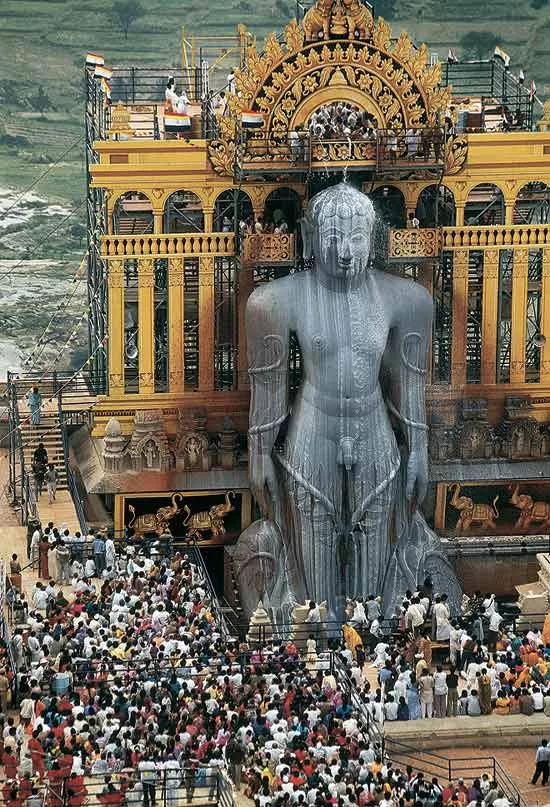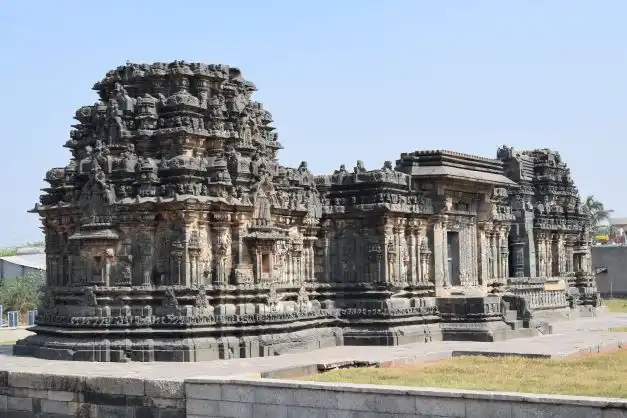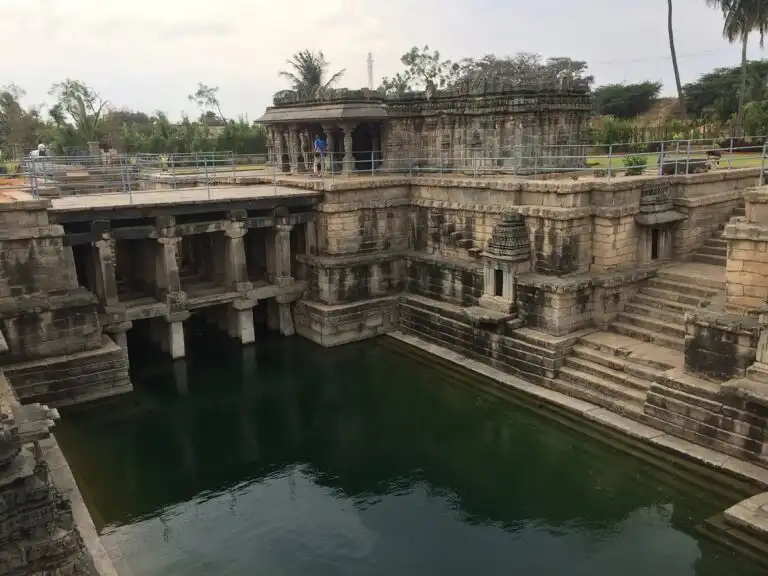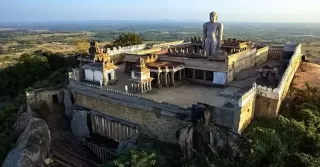Lakkundi and Shravanabelagola’s Monolithic Marvels, The State Department of Archaeology, Museums, and Heritage (DAMH) has proposed two prominent monuments in Karnataka for inclusion in the prestigious UNESCO World Heritage list. These are Shravanabelagola, located in Hassan district, and Lakkundi, situated in Gadag district. Following the recent recognition of the Hoysala temples as UNESCO World Heritage Sites, this article delves into the historical and cultural importance of these two remarkable locations.
ALSO READ: Canvas of Culture: The Symbolism in Maratha Style Art
Before the 14th century, Lakkundi, historically referred to as Lokkugundi, was a prominent city. Now a village in Karnataka’s Gadag District, it held considerable importance as a trade and economic center as early as the 10th century. Kannada and Sanskrit inscriptions highlight its role in minting operations that served South India. By the 12th century, Lakkundi had become home to several Hindu and Jain temples, alongside public amenities such as stepwells and water reservoirs.

Lakkundi: A Historic Crossroads of Hindu, Jain, and Muslim Heritage
As Lakkundi’s wealth and prominence grew, it became one of the capitals of the Hoysala Empire. The town boasted numerous temples, including the Brahma Jinalaya, Mallikarjuna, Lakshminarayana, Manikeshwara, Naganatha, Kumbheshvara, Nanneshwara, Someshwara, Narayana, Nilakanteshwara, Kasivisesvara, Virabhadhara, Virupaksha, and many others.
In the 14th century, Islamic Sultanates attacked Lakkundi in their efforts to gain political and economic dominance over the Hindu kingdoms of South India. Today, the village contains over fifty temple ruins, many of which are in poor condition and infested with bats. The Archaeological Survey of India (ASI) oversees the preservation and maintenance of the key temples that have been restored. Lakkundi holds great significance for studying the Hindu architecture of the Kalyana Chalukya period, recognized as the “Lakkundi school” of architectural and artisanal excellence.

The 19th-century British archaeologists played a crucial role in rediscovering Lakkundi and highlighting its significance in Indian art history. Today, some of the ruins from Lakkundi are displayed in a nearby sculpture gallery and sheds adjacent to the temples, offering a glimpse into the rich history of Indian art in museum settings. In addition to its Hindu and Jain monuments, Lakkundi is also home to a Muslim dargah dedicated to Zindeshah Wali. This diverse historical and cultural heritage attracts visitors from across the globe.
Shravanabelagola: A Sacred Pilgrimage Center of Jainism and Architectural Mastery
Shravanabelagola, located near Channarayapatna in Karnataka’s Hassan district, is one of Jainism’s most important pilgrimage sites. It is renowned for the Gommateshwara Bahubali statue, which represents the pinnacle of architectural and sculptural achievement under the Western Ganga dynasty of Talakad. According to tradition, Chandragupta Maurya, after embracing Jainism and adopting an ascetic lifestyle, passed away in 298 BCE on Chandragiri Hill near Shravanabelagola.
Shravanabelagola is home to 560 inscriptions. The name “Beḷagoḷa,” meaning “white pond,” refers to the pond at the town’s center. “Shravanabelagola,” or “White Pond of the Shravana,” derives its name from the towering statue of Gommaṭa. The prefix “Śravaṇa” distinguishes it from other Belagolas, such as Hale-Belagola and Kodi-Belagola. This interpretation is further supported by the Sanskrit terms Śvetasarovara, Dhavalasarovara, and Dhavalasarasa found in the inscriptions.

Shravanabelagola: A Timeless Legacy of Jain Pilgrimage, Architecture, and Spirituality
Shravanabelagola is comprised of two hills, Chandragiri and Vindhyagiri. It is believed that Acharya Bhadrabahu and his disciple Chandragupta Maurya meditated on Chandragiri. The Chandragupta Basadi, originally built by Emperor Ashoka in the 3rd century BCE, was dedicated to Chandragupta Maurya. Since the 5th century CE, Chandragiri has served as a meditation site for numerous monks and Śrāvakas. Including the last ruler of the Rashtrakuta dynasty of Manyakheta. Another prominent temple on Chandragiri was built by Chavundaraya.
Vindyagiri Hill is home to the world’s largest monolithic statue of Gommateshwara, standing 58 feet tall. The base of the statue features inscriptions in Prakrit, dated to 981 AD. These inscriptions honor Chavundaraya, the general who commissioned the statue for his mother. As well as the king who funded its construction. Every twelve years, the statue is anointed during the grand Mahamastakabhisheka ceremony, which attracts thousands of devotees. The anointing involves the use of water, turmeric, rice flour, sugarcane juice, sandalwood paste, saffron, and gold and silver flowers. The most recent Mahamastakabhisheka took place in February 2018, with the next one scheduled for 2030.
Nestled between the Vindhyagiri and Chandragiri Hills, Shravanabelagola is protected by the towering monolith of Bhagwan Bahubali. With a rich Jain heritage spanning over 2,300 years. It stands as a true reflection of our long and illustrious history and cultural legacy.


